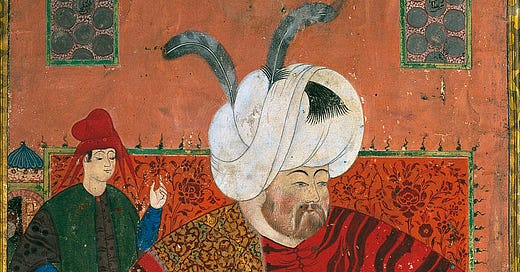Contents
Introduction
The Habsburgs - Forever Wars With Austria
Poland-Lithuania Wars And Beyond
Concluding Remarks
Bitesize Edition
Previously we’ve covered the Western Roman Empire and Eastern Roman Empire, also known as the Byzantines. The Byzantine Empire lost its capital in 1453 to the Ottomans, who then established control over much of the Balkans.
To the north of the Ottoman-controlled Balkans lay the Habsburg Empire. To the North-East sat the Poland-Lithuania Commonwealth, and Transylvania. The Republic of Venice also existed to the West of the Balkans.
The Ottomans tried to limit Habsburg's power to the North but often saw their efforts unrewarded, with small gains made by either side in long, drawn-out conflicts.
This period aligns with the period some believe marks the beginning of the Ottoman's decline. Some state this began when the Ottomans reached the extent of their territorial control in 1683. Regardless of beliefs of when the Ottomans did begin their decline, today we’ll explore their period of firm control over the Balkans, and we’ll set up the beginning of the end for the Ottomans, which (small spoiler) occurred over 200 years later. Quite a slow decline, right? For now, let's explore the Ottomans in their heyday, and how the Balkans were affected by these conflicts.
Introduction
We concluded last week with the death of Sultan Suleiman the Magnificent in 1566. It’s debated whether this started the slow decline of the Ottomans, or once they reached the maximum extent of their territorial control over a century later in 1683. With today’s continuation into the history of the Balkan region, I’ll allow you to be the judge. The Ottomans maintained dominant leadership and control over the Ottomans for the period discussed today, but wars occurred, nonetheless. Back in the day when wars were all we knew, access to necessities was a function of the land you possessed to grow food and to access water. Resource competition drove many decisions in war and strategic planning. Increasing territory led to the protection of one’s key fortresses and settlements, and control over key trade routes, which furthered the economic prowess of these powerful empires. The hardest fought battles came when two empires sat border-to-border with one another, shifting from competition to cooperation to conflict. For the Ottomans, this came in the form of the Habsburgs.
Keep reading with a 7-day free trial
Subscribe to Geopolitics Explained to keep reading this post and get 7 days of free access to the full post archives.



